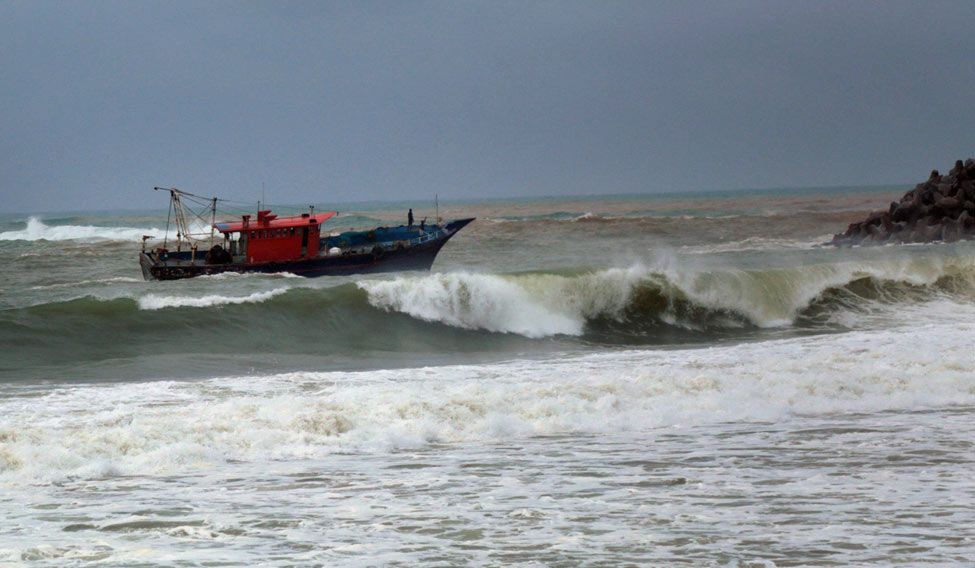The Indian Navy's rescue mission in the aftermath of Cyclone Ockhi was the biggest humanitarian and disaster relief operation undertaken by it after the 2004 tsunami in terms of duration and geographical coverage, with 4.5 lakh sq miles sanitised during the nearly 20-day operation.
The Navy, which reviewed 'Operation Sahayam', stressed the need to put a mechanism in place to account for fishermen venturing into the sea, carriage of adequate safety gear and positioning systems, and prompt relay of weather warnings to avoid casualties in such situations.
"It is indeed heartening to learn that agencies concerned are moving in that direction", a Defence spokesman said.
The Navy's full scale Search and Rescue Operation continued relentlessly for more than four weeks with naval assets searching more than 4.5 lakh square miles off coasts of Kerala in most adverse weather conditions for missing fishermen, vessels in distress and stranded fishermen requiring assistance.
The cyclone, which had hit coastal states like Kerala and Tamil Nadu on November 30, claimed several lives and caused widespread damage. A large number of fishermen are still missing.
In what has been termed as unprecedented in the last three decades, the weather system rapidly developed into a cyclone and thereafter into a very severe cyclone.
The formation of cyclone over Arabian Sea was declared by the India Meteorological Department (IMD) at 12:00 pm on November 30.
"At this particular time the system was located about 70 km south of Thiruvananthapuram. As was seen, Kanyakumari and adjoining Tamil Nadu coast were impacted even before the weather system intensified to become a cyclone," the Defence spokesman said.
He said a systematic planning methodology was employed for searches based on meteorological and hydrological conditions and also taking into consideration the path of the storm. Concerted efforts, therefore, resulted in localisation of drifting boats requiring assistance up to 200nm NW of Kavaratti.
He said the Navy also closely coordinated with Indian Coast Guard ships in the area resulting in synergy of operations and thereby better efficiency.
"Indian Navy ships and aircraft undertook searches even in the waters of Maldives and no stranded fishermen were found. The Government of Maldives also deployed their patrol craft and confirmed that no Indian fishermen were stranded in their islands, both, inhabited and uninhabited," the spokesman said.
He said that at the time of this unprecedented natural calamity, the Indian Navy exercised tremendous initiative, courage and resilience and responsibly took on the lead role of carrying out an intensive and systematic search and rescue operation to save stranded fishermen of not only Kerala but also Tamil Nadu, Lakshadweep and Minicoy Islands.
"The Indian Navy deployed a total of 16 ships for the Search and Rescue operations across the wide expanse and sanitised a total of more than 4,50,000 square miles," he said.
This resulted in rescue of 136 survivors as also recovery of six bodies and support provided in terms of water, fuel, provisions, medical and technical aid to 172 personnel extending from Kerala coast to all Lakshadweep and Minicoy Islands, he said.
"This was the biggest humanitarian and disaster relief (HADR) operation carried out by the Navy after Tsunami in terms of duration and the geographical coverage," he said.
Whilst the Navy has contributed in full measure towards the SAR Operation, there is a process set into motion to examine every aspect carefully and seek further improvements, he said.
"It would be the Navy's endeavour to refine further and be better prepared for such missions in future. Similarly, it is hoped that all stakeholders would examine their charter and address issues on priority," the spokesman said.





